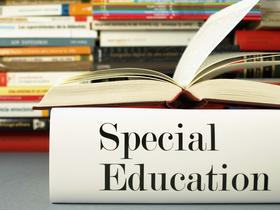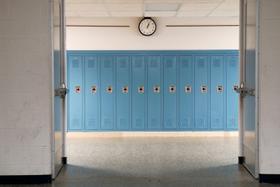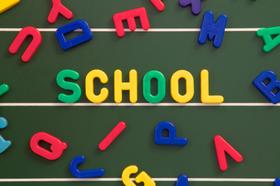The Arizona State Schools for the Deaf and the Blind is an Arizona state agency, with its administrative headquarters in Tucson.
Asdb - Region 3 ranks in the bottom 50% of all schools in Arizona for overall test scores (math proficiency is bottom 50%, and reading proficiency is bottom 50%).
The percentage of students achieving proficiency in math is 20-29% (which is lower than the Arizona state average of 45%). The percentage of students achieving proficiency in reading/language arts is 20-29% (which is lower than the Arizona state average of 45%).
Quick Stats (2025)
- School Type: Special education school
- Grades: Prekindergarten-12
- Graduation Rate: ≥50% (Top 1% in AZ)
- Math Proficiency: 20-29%
- Reading Proficiency: 20-29%
- Source: National Center for Education Statistics (NCES), AZ Dept. of Education
School Overview
School Type
Grades Offered
Grades Prekindergarten-12
(No virtual instruction)
(No virtual instruction)
Total Students (19-20)
132 students
Total Classroom Teachers
n/a
Year Founded
1912
School Rankings
Math Test Scores (% Proficient)
(18-19)20-29%
45%
Reading/Language Arts Test Scores (% Proficient)
(18-19)20-29%
45%
Student : Teacher Ratio
n/a
17:1
American Indian
(19-20)5%
6%
Asian
(19-20)1%
3%
Hispanic
(19-20)54%
45%
Black
(19-20)3%
5%
White
(19-20)35%
38%
Hawaiian
(19-20)1%
n/a
Two or more races
(19-20)1%
3%
Graduation Rate
(18-19)≥50%
78%
Eligible for Free Lunch (19-20)
5%
43%
Eligible for Reduced Lunch (19-20)
1%
7%
School Statewide Testing
School District Name
Source: National Center for Education Statistics (NCES), AZ Dept. of Education
Frequently Asked Questions
What schools are Asdb - Region 3 often compared to?
Asdb - Region 3is often viewed alongside schools like Rillito Center, Dan Hinton Accommodation School by visitors of our site.
What percent of students have achieved state testing proficiency in math and reading?
20-29% of students have achieved math proficiency (compared to the 45% AZ state average), while 20-29% of students have achieved reading proficiency (compared to the 45% AZ state average).
What is the graduation rate of Asdb - Region 3?
The graduation rate of Asdb - Region 3 is 50%, which is lower than the Arizona state average of 78%.
How many students attend Asdb - Region 3?
132 students attend Asdb - Region 3.
What is the racial composition of the student body?
54% of Asdb - Region 3 students are Hispanic, 35% of students are White, 5% of students are American Indian, 3% of students are Black, 1% of students are Asian, 1% of students are Hawaiian, and 1% of students are Two or more races.
What grades does Asdb - Region 3 offer ?
Asdb - Region 3 offers enrollment in grades Prekindergarten-12 (No virtual instruction).
What school district is Asdb - Region 3 part of?
Asdb - Region 3 is part of Arizona State Schools For The Deaf And The Blind (6393) School District.
In what neighborhood is Asdb - Region 3 located?
Asdb - Region 3 is located in the El Rio Acres neighborhood of Tucson, AZ. There are 5 other public schools located in El Rio Acres.
School Reviews
Review Asdb - Region 3. Reviews should be a few sentences in length. Please include any comments on:
- Quality of academic programs, teachers, and facilities
- Availability of music, art, sports and other extracurricular activities
Recent Articles

Parents’ Guide to Special Education
Special education law is not easy to decipher, with several regulations that govern special education services for disabled students. In this article, learn about the core components of the laws, rights, and individual education plans that can help create the best public school environment for your child.

Surveillance Cameras: Violation of Rights or Improved Security?
A school district in Virginia has given the green light to schools that want to install surveillance cameras in common areas like cafeterias and hallways. We’ll look at whether this is a violation of student privacy or the best way to keep order in schools.

Teachers in 19 States Allowed to Physically Punish Students
As of 2014, nineteen states still allow corporal punishment – spanking and paddling the most common choices – in their public schools. However, some argue that not only are these punishments physically harmful, they also are disproportionately administered to students of color. As a result, House democrats have taken up the issue in a new bill that would ban all forms of corporal punishment nationwide.





